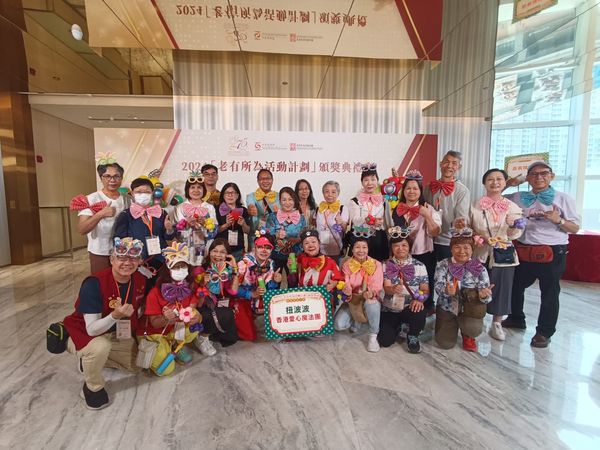Magic and Improvisation
WAN Sze-chung
Head of the Academy of Caring Magic Limited, Hong Kong
Published on 16 March 2025
“Changes go faster than plans”, especially in the dynamic business environment nowadays. The ability of improvisation has prime importance to team performance.
Improvisation is subject to changes, first-time and redirection while an individual can predict and explore the possible ways of development by relying on what had happened and what continued to play (Barrett 1998, p. 151). By reciting Moorman et al. (1998), Akgun et al. (2002, p.117) points out that the term “improvisation” comes from the word “improvisus” (a Latin word) that means “not seen ahead of time”. In other words, it is also interpreted as putting plans and implementation together with immediate actions while it is about designs and processes that are continuously reconstructed. According to Weick (1998, p.544), the prefix “im” gives an opposite meaning. “Improvise” also refers to the opposite meaning of “proviso” while “improvisation” is about dealing with those unforeseen and without fixed rules beforehand.
Improvisation has been adopted in different areas, ranging from performing arts (such as Jazz improvisation and theatre improvisation) to team improvisation, requiring individuals to think quickly and adapt to fast-changing environment with innovative solutions. Wan (2006) applied Magic, with the concepts of spontaneity, motor skills, problem solving skills, attention, cognitive skills, psychological skills and perception, offers an effective tool for developing such improvisational skills. Magic tricks often involve elements of misdirection, spontaneous thinking, and adaptability, making magic an effective tool for improvisational training. Misdirection, a fundamental technique in magic, teaches individuals how to guide audience’s attention in an effective way, and translate the skills to manage focus (Hugard & Braue, 1974). On top of that, one’s ability to recover and manage the situation from a failed magic trick or performance requires high level of resilience and adaptability, which are essential qualities for improvisation.
Improvisation training can take different forms. A simple example is to use simple magic tricks as a starting point for improvisational activities through which participants can be given a basic trick and to create a spontaneous performance, incorporating suggestions and inputs from audience. This encourages communication, interaction and feedback and enhances the performer’s ability to think on their feet through creativity, collaboration and adaptability (Lamont & Wiseman, 2005). Another simple example is to use magic as a tool for problem-solving. By giving the participants a seemingly impossible problem relating to design a magic trick and asking the group to brainstorm solutions, in order to develop their critical thinking and adaptability skills. Such activities are adopted to encourage learning through experimentation and learn from failure (Nisbett & Ross, 1980).
Overall, Magic, with creativity, adaptability, and unexpected, facilitates the development of improvisation skills. Skills and experiences learned from magic training can help individuals become more adaptable, creative, and confident in their ability to address uncertainty and transform challenges into opportunities for growth and innovation of organizations.
References
Akgun Ali E. and Lynn Gary S. (2002), New Product Development Team Improvisation and Speed-to-market: An Extended Model, European Journal of Innovation Management, Vol. 5, No. 3 2002, pp.117-129
Barrett F. & Peplowski K. (1998), Minimal Structures within A Song: An Analysis of “All of Me”, Organization Science, 9(5): 558-559
David Pogue (1998), Magic for Dummies, IDG Books Worldwide Inc., USA
Ed Rose (1998), Presenting and Training with Magic – 50 Simple Tricks You Can Use to Energize any Audience, McGraw-Hill Inc., USA
Fairley Stephen G. & Stout Chris E. (2004), Getting Started in Personal and Executive Coaching, John Wiley & Sons, USA
Gardner Howard (2003), Multiple Intelligences After Twenty Years, Harvard Business School of Education, USA
Hepworth Dean H., Rooney Ronald H. & Larsen Jo Ann (1997), Direct Social Work Practice – Theory and Skills 5th Edition, Brooks Cole Publishing Company, USA
Hugard J. & Braue H. (1974), The Magician’s Handbook, Dover Publications, USA
Lamont P. & Wiseman R. (2005), Magic in Theory: An Introduction to the Theoretical and Psychological Elements of Conjuring, University of Hertfordshire Press
Law Bridget M. (2005), Gesture Gives Learning A Hand, Monitor on Psychology, Vol.36 No.10 Nov 2005, American Psychological Association, USA
Nisbett R. E., & Ross L. (1980), Human Inference: Strategies and Shortcomings of Social Judgment, Prentice-Hall
Wan, S.C. (2006), An Exploration of The Use of MAGIC as a Training Method for Personal Development in Hong Kong, Dissertation submitted on the Completion of International Programmes in Educational Studies – M.Ed. (Guidance and Counselling), University of Newcastle Upon Tyne, 2006
Weick Karl E. (1998), Improvisation as a Mindset for Organizational Analysis, Organizational Science, Vol. 9, No.5, 9/10 1998, pp. 543-555









